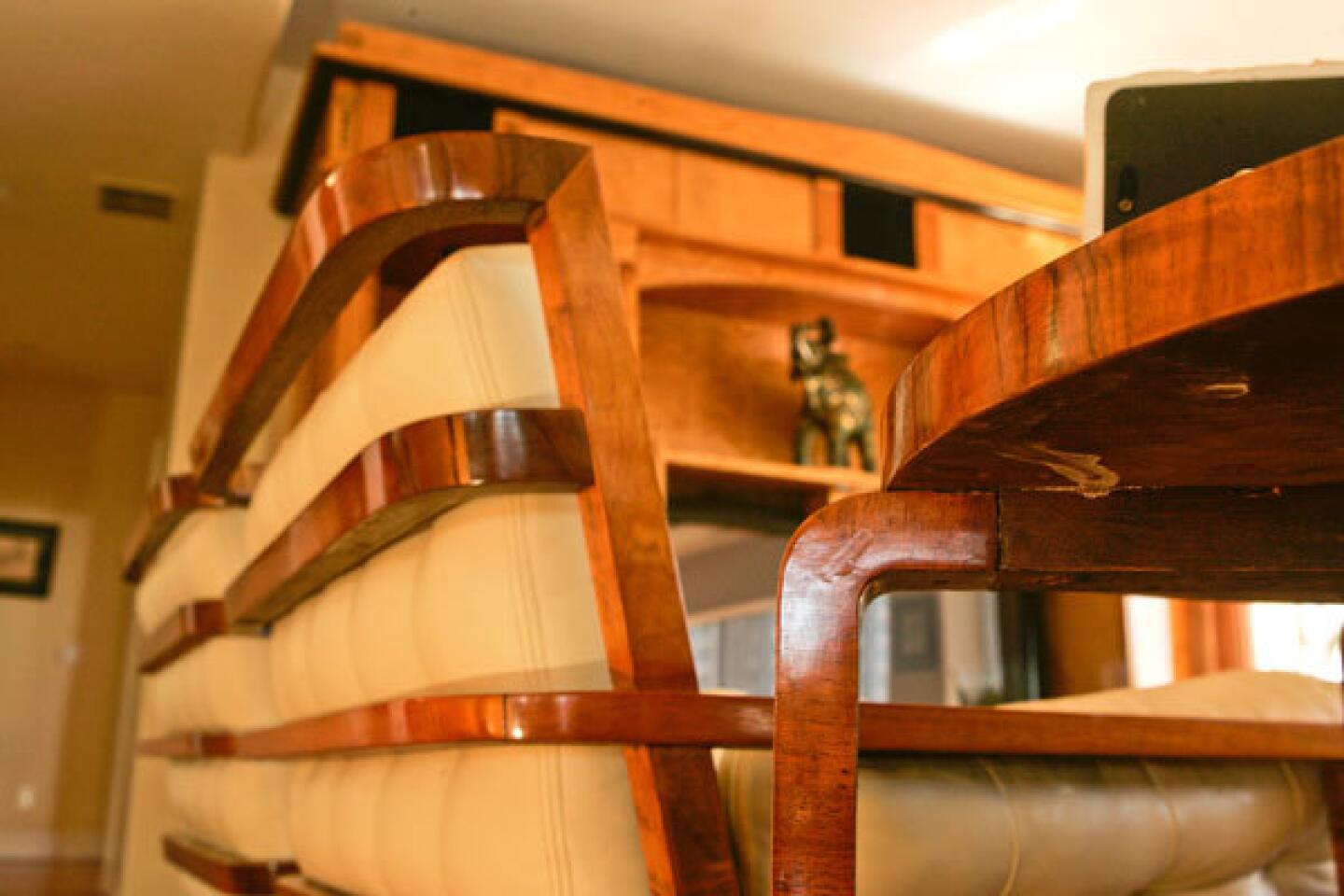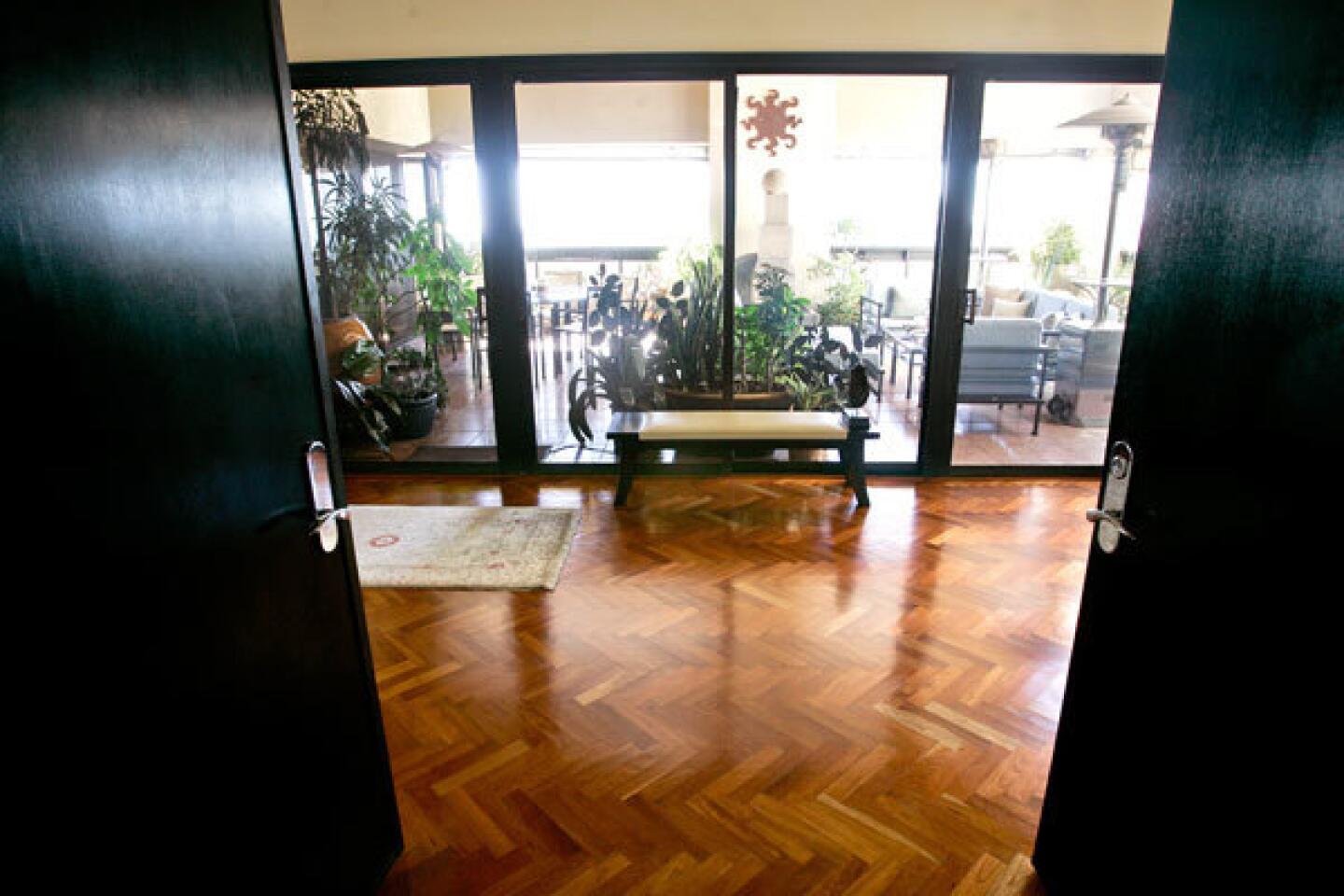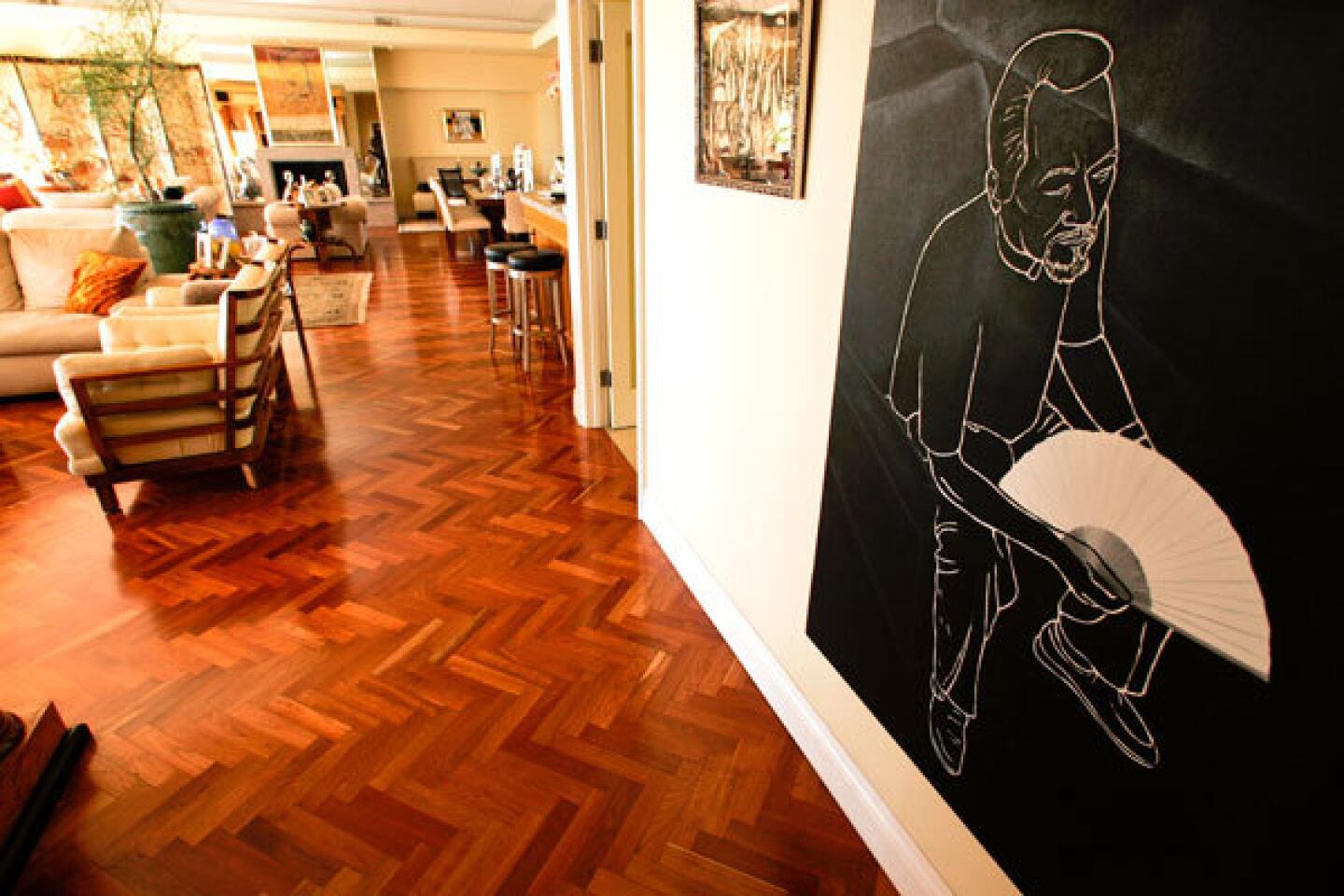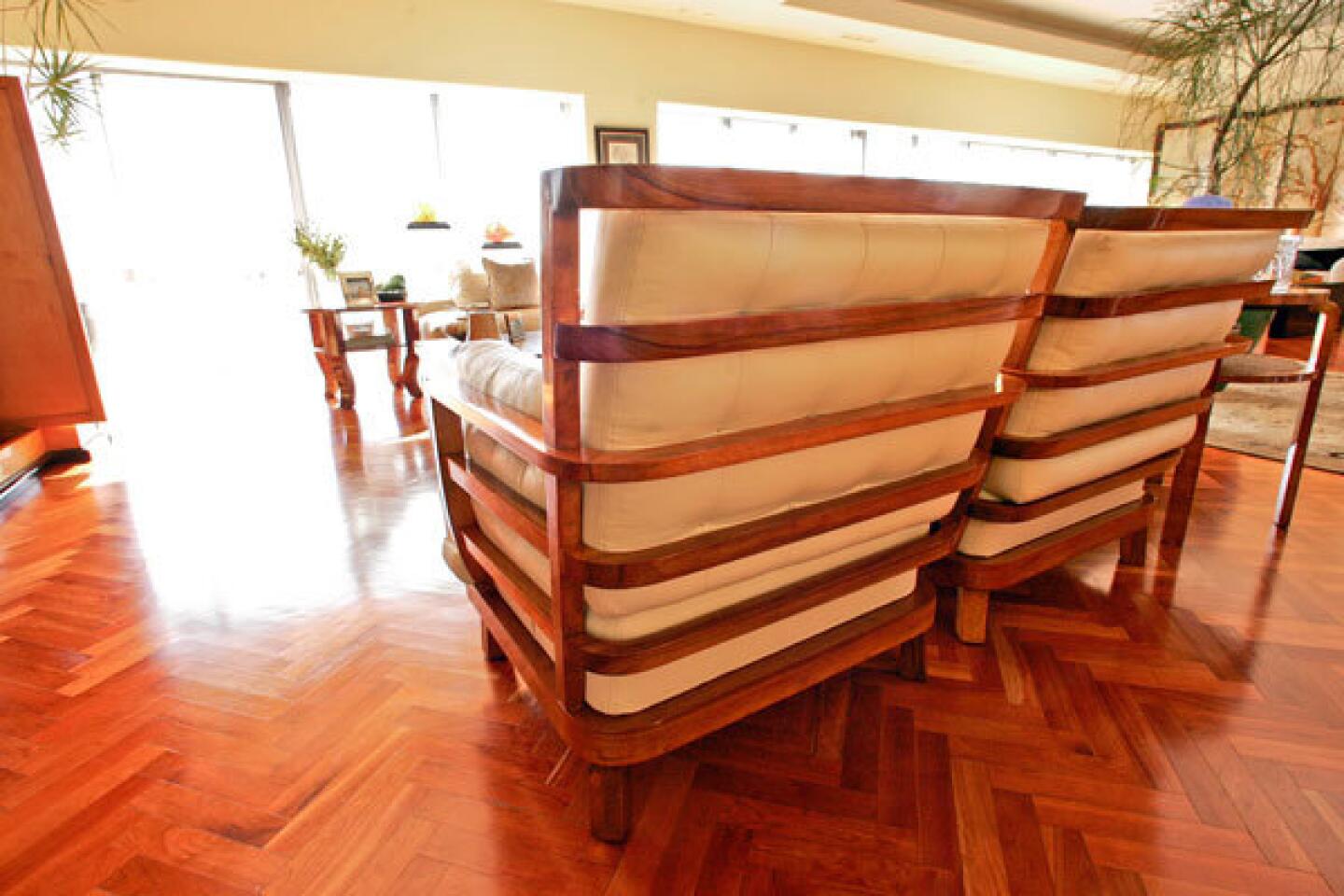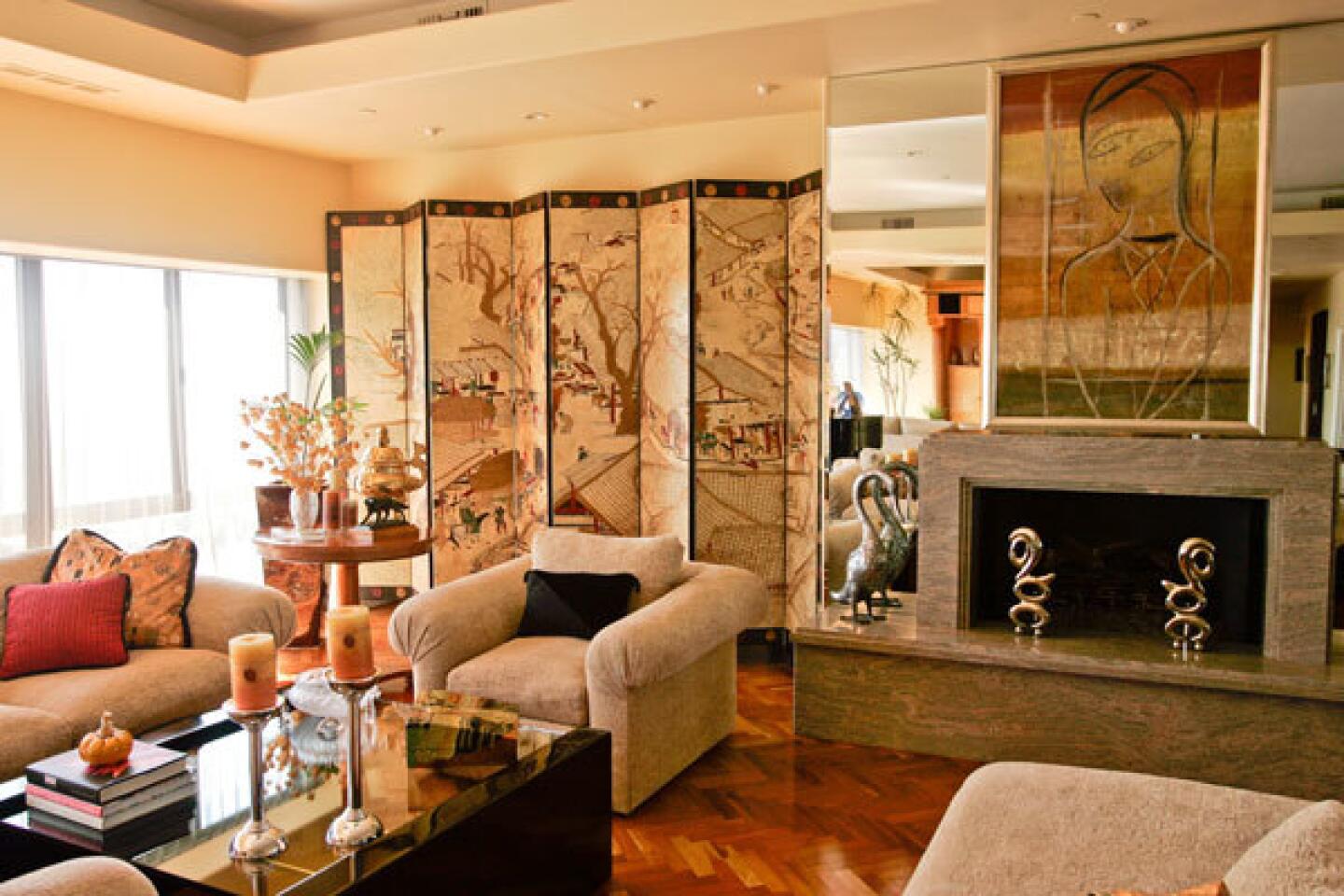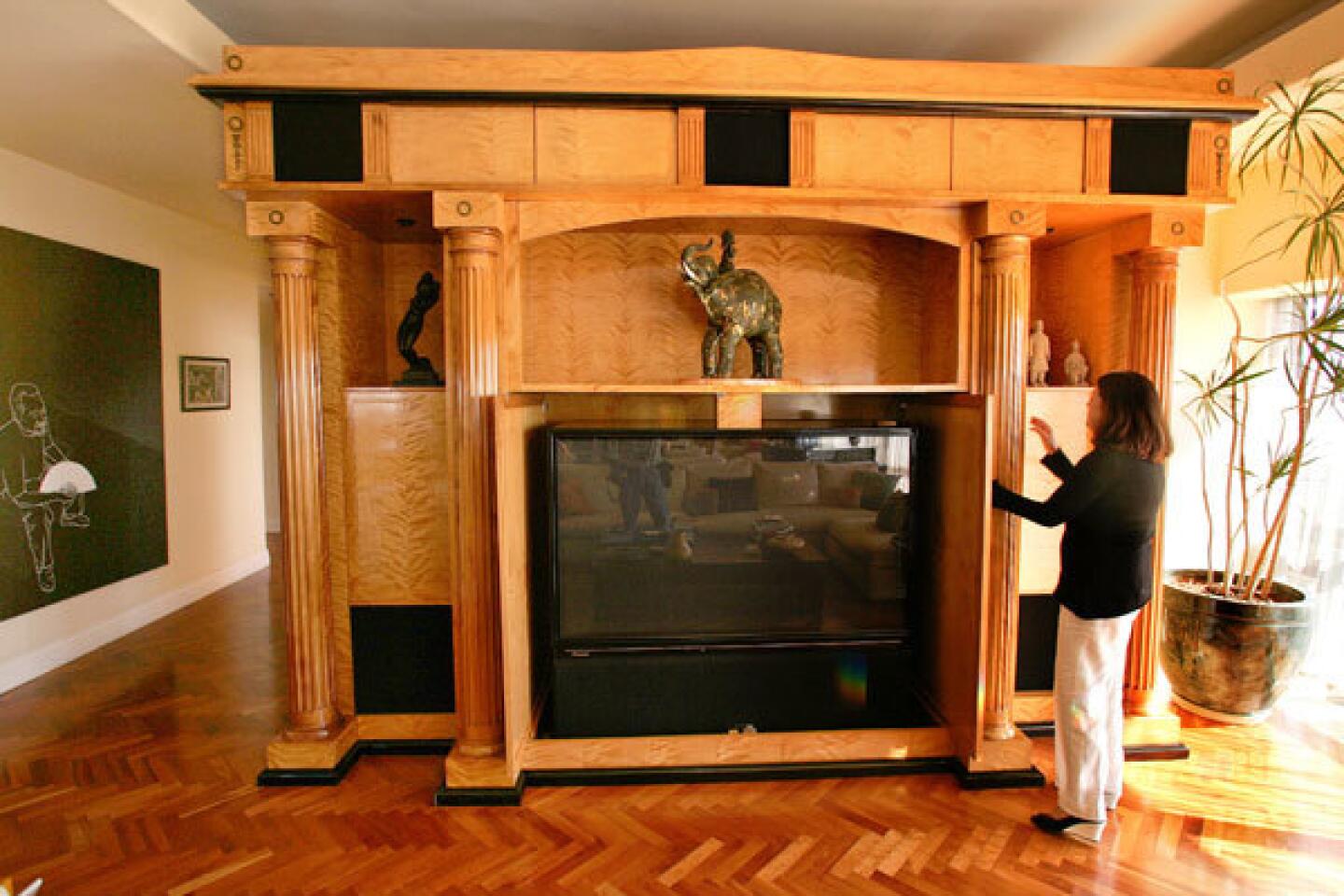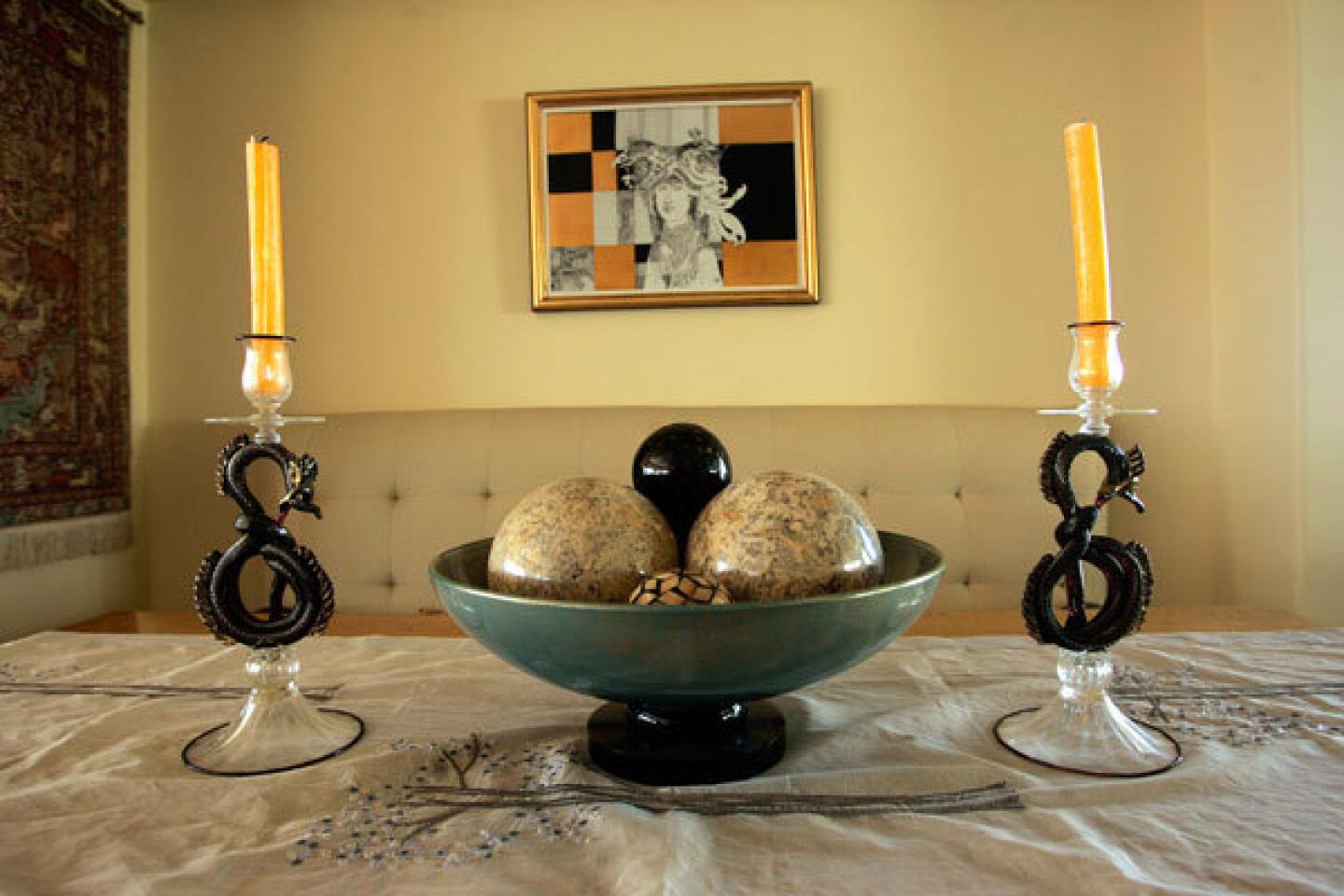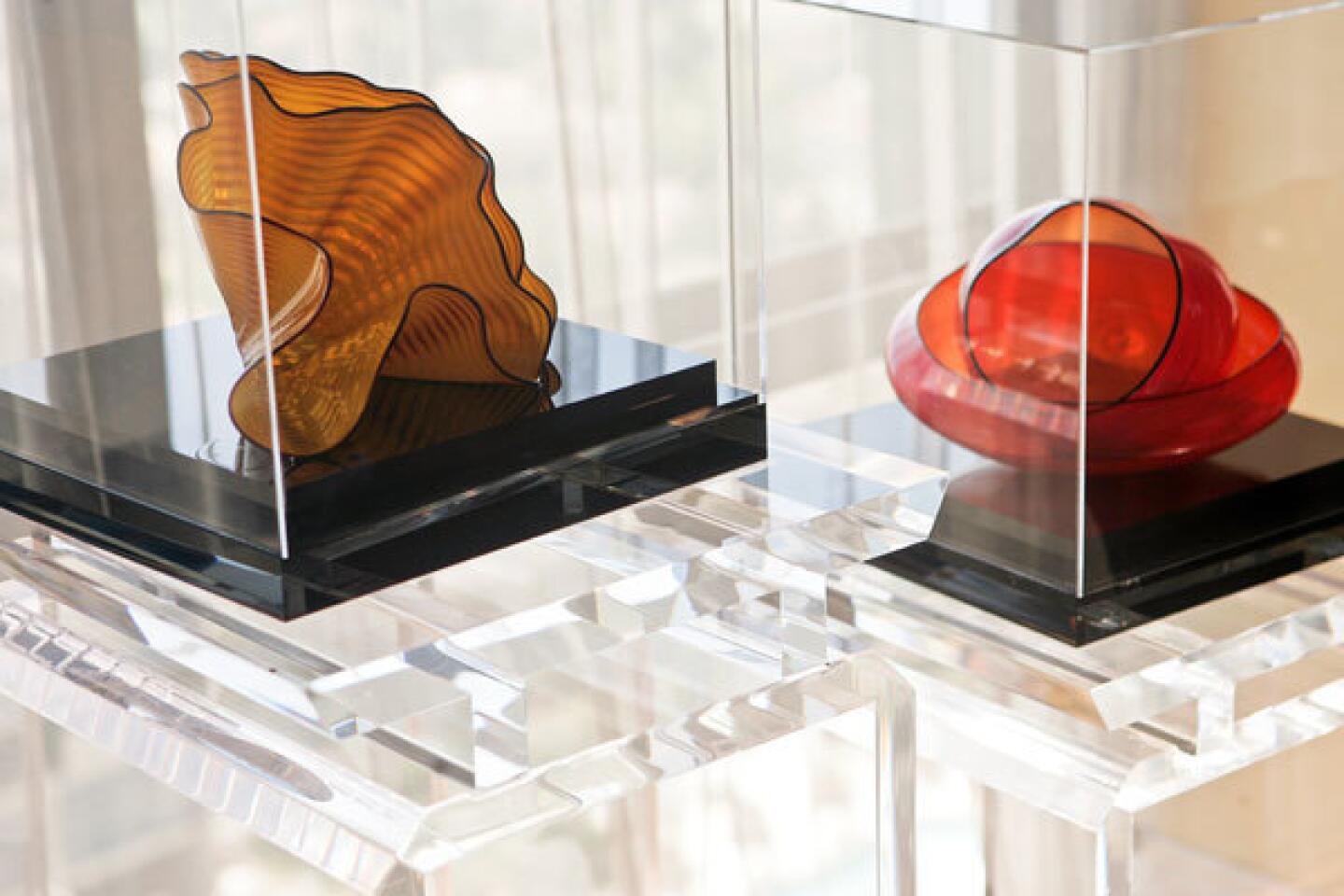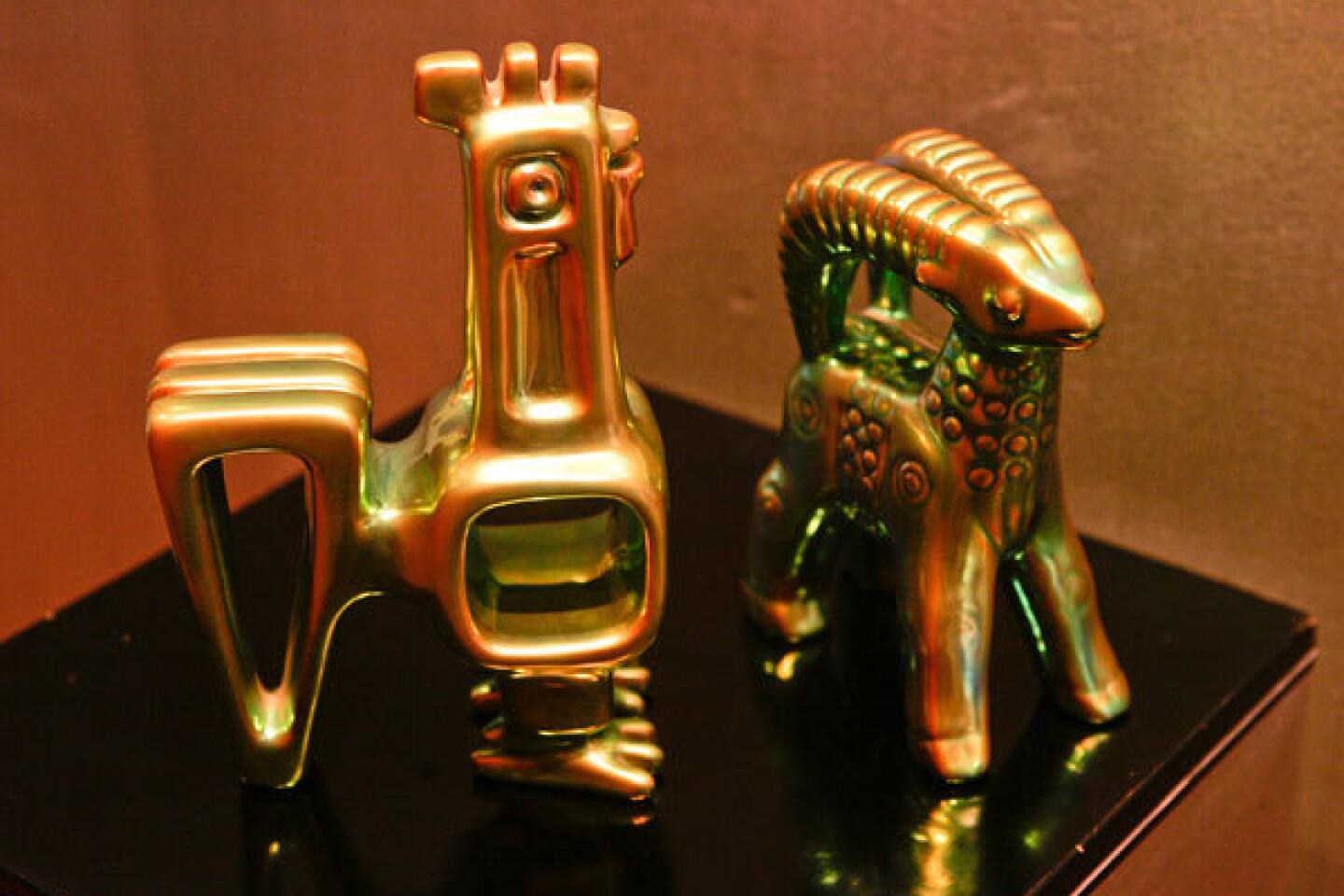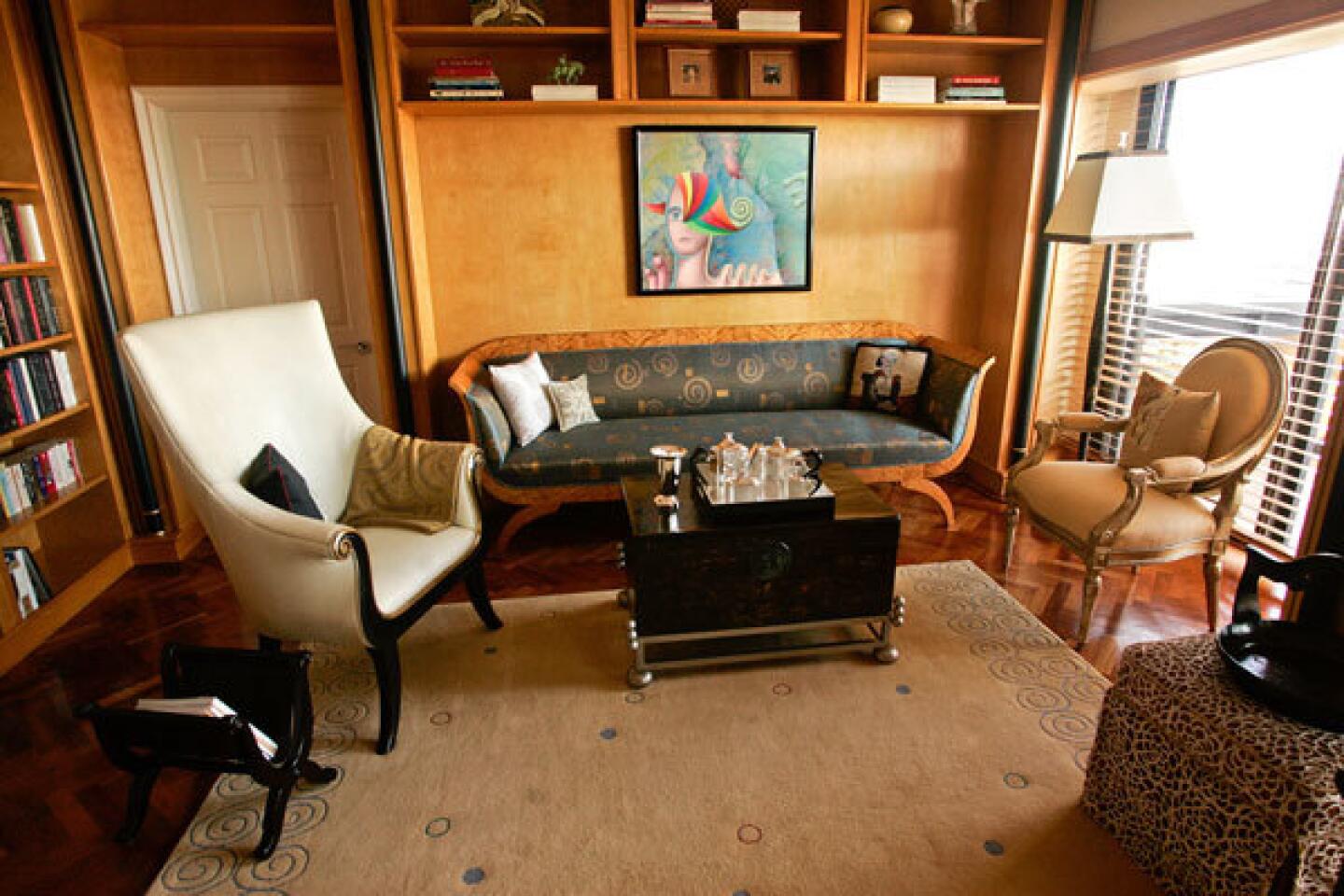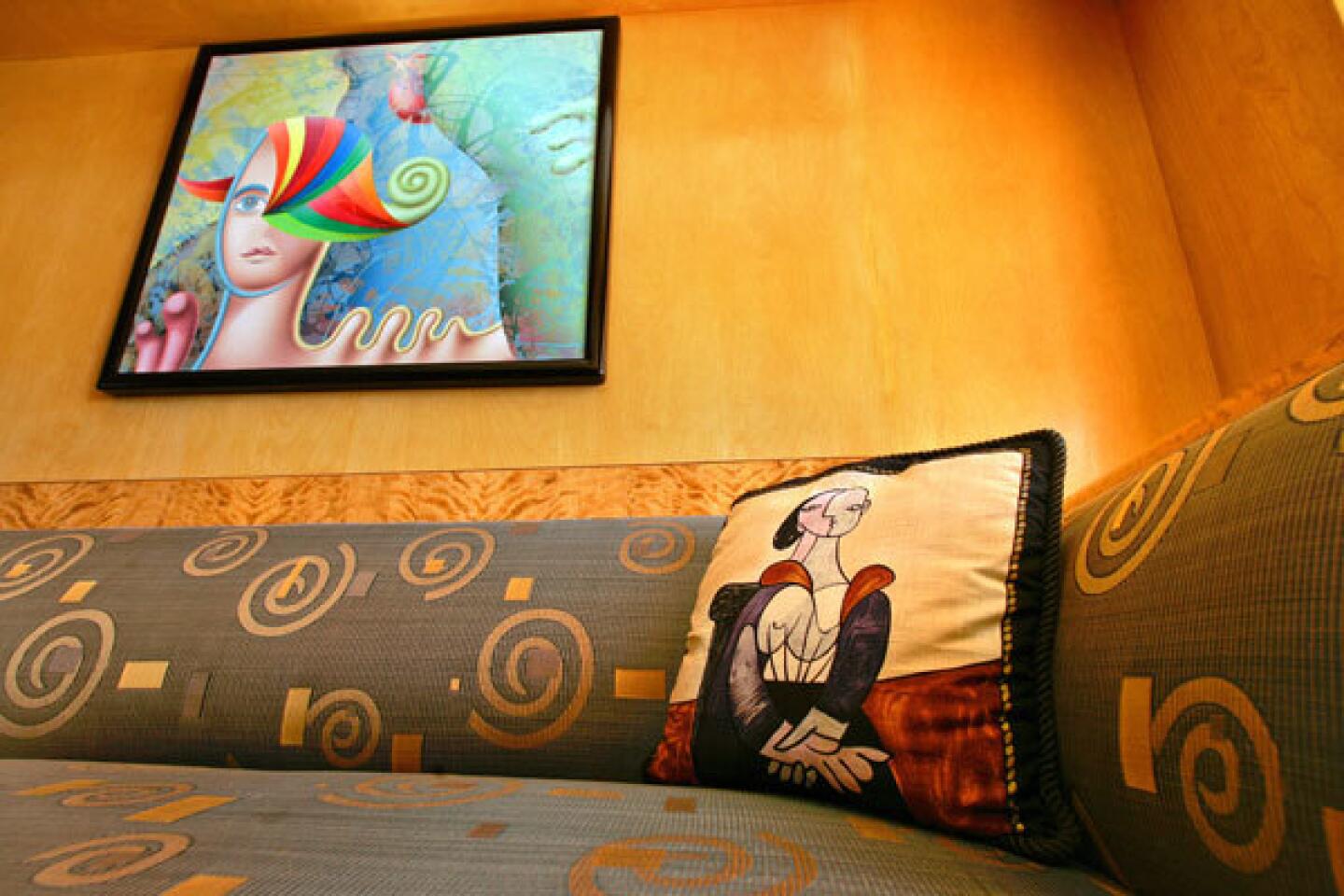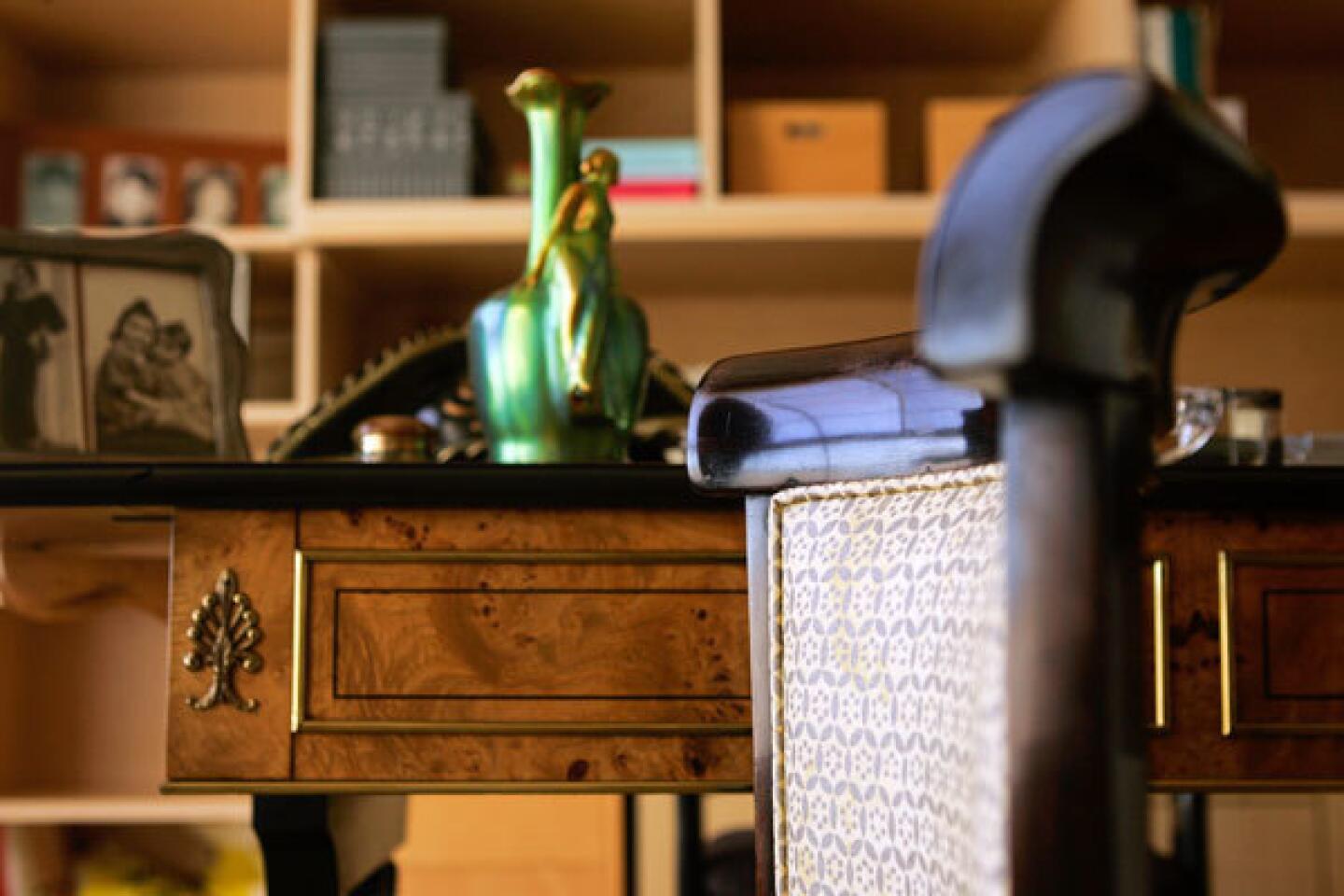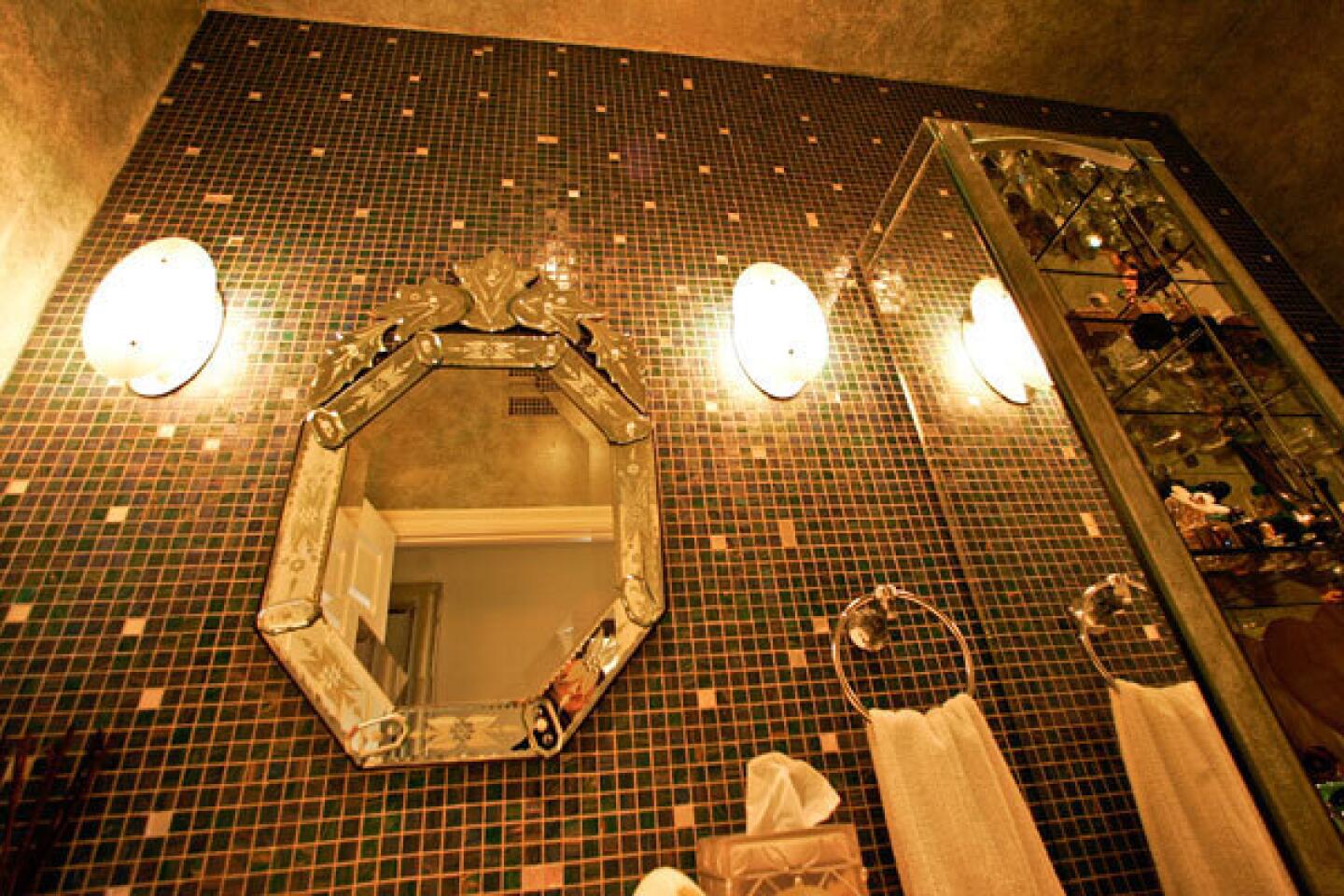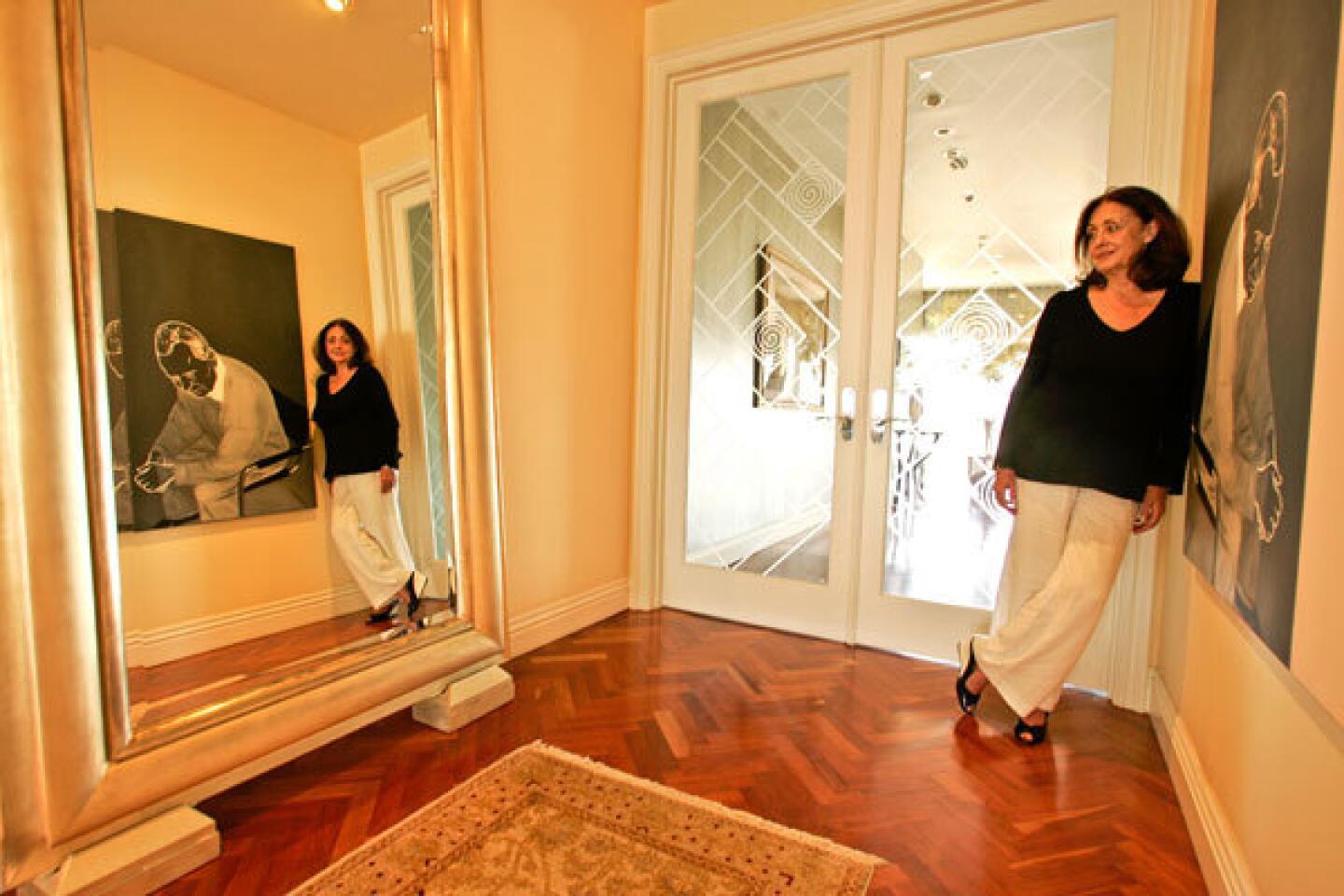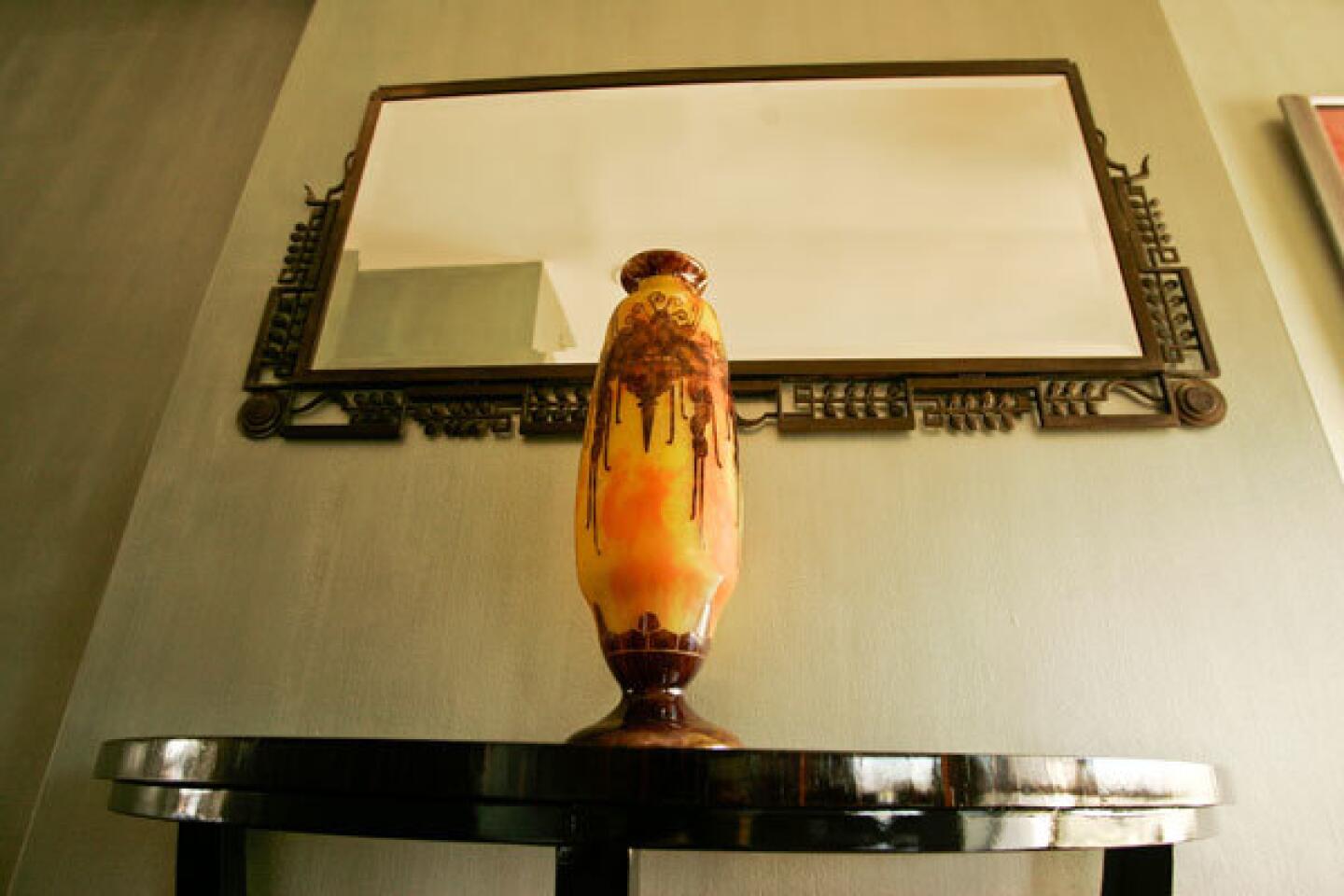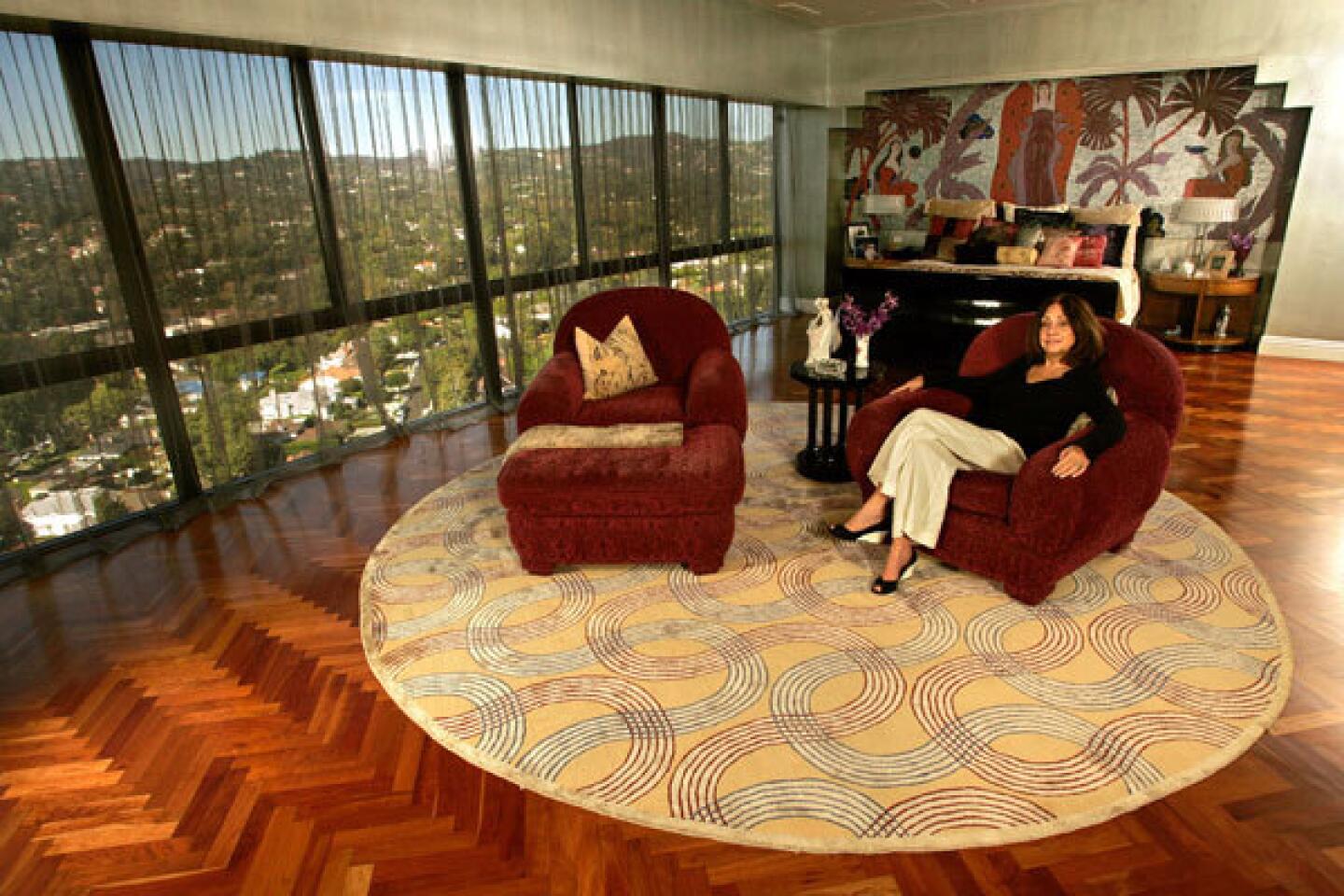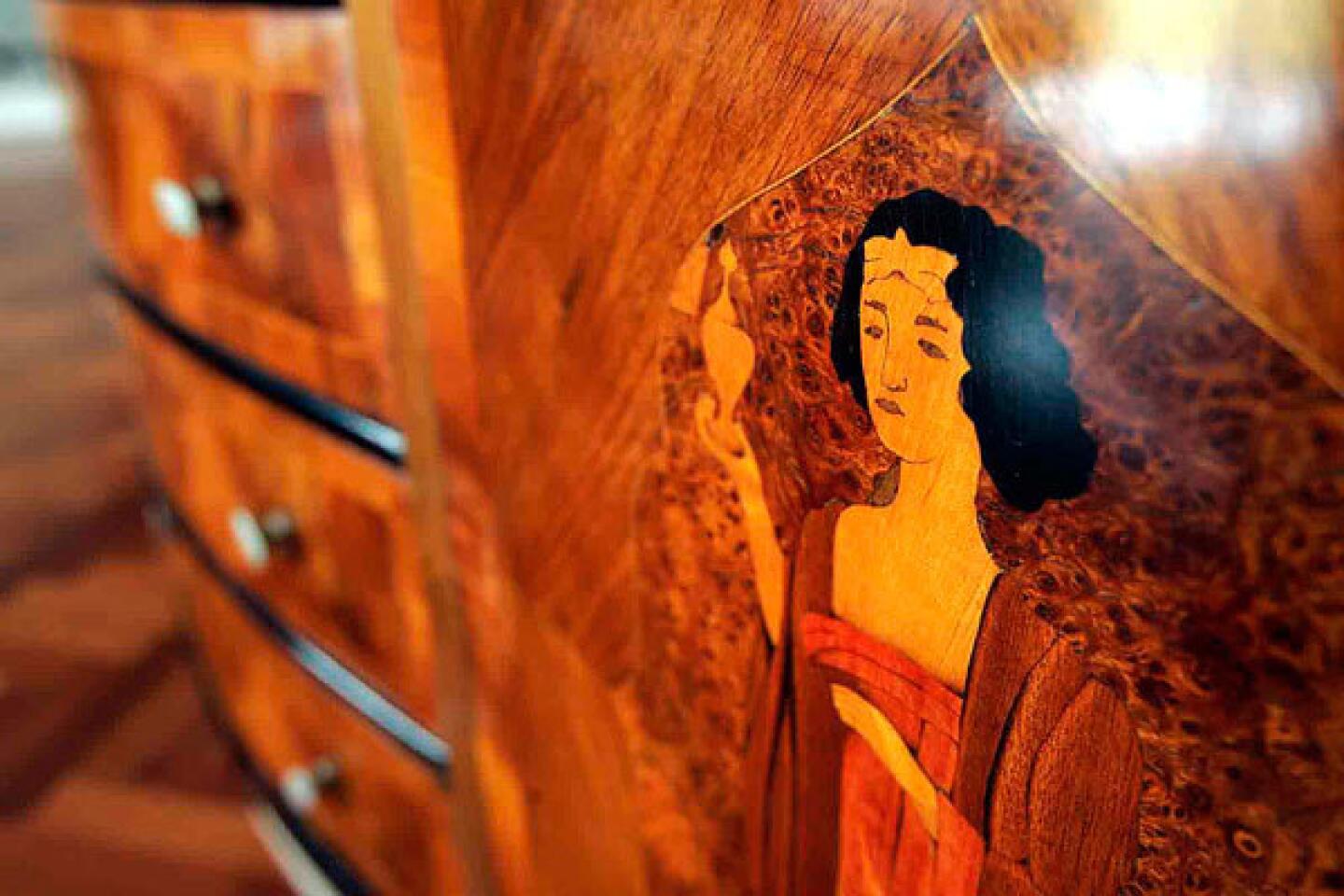THE MAXIMALIST
Made of glass and steel, the modern high-rises on Wilshire Boulevard in Westwood look like ideal homes for people who love minimalist interiors. Judith Hoffman isnât one of them.
âCertainly there is a whole group of people today who feel the need to relive the clean reductive Bauhaus way,â she says, referring to a 1920s modernist aesthetic. âI believe in contemporary spaces, but I have discovered that less isnât more. Itâs just less.â
To prove her point, Hoffman has decorated her penthouse condo with an opulent blend of decorative periods and styles. The rooms are filled with artfully arranged Art Deco and Vienna Secessionist furniture as well as pieces inspired by 1940s French design and the early 19th century German neoclassical style known as Biedermeier. Asian antiques, Moroccan rugs and pre- World War II Hungarian ceramics keep company with a sleek new sofa by the Italian firm Minotti, a table by Parisian designer Christian Liaigre and recent glassworks by American Dale Chihuly.
âAntiques have to be combined with contemporary designs to make it feel like today,â Hoffman says. âIâm not crazy about doing purely period rooms because too many antiques becomes mundane.â
Itâs also not the way people furnished their homes in the past, says Hoffman, who was born in Budapest and moved to Los Angeles at age 14 and went on to become a designer. In her native land, each generation layered new things with family heirlooms, she says. âThings could be 20, 50 or 100 years old and all live very well together.â
This old-meets-new decorating philosophy is harder to achieve in this era of disposable home dĂŠcor.
âI want to be as up to date as everyone else,â Hoffman says, âbut I resent the pack mentality of it. I always admired things for their own beauty and not necessarily because everybody thought they were cool.â
She first fell in love with Art Deco as a student at Hollywood High in the late 1950s, long before the first revival of interest in Jazz Age design.
âWalking along Hollywood Boulevard, seeing these buildings and watching movies from the 1930s really piqued my interest,â Hoffman says. âIn Los Angeles, itâs all part of our immediate heritage.â
Decades later, when she began making regular visits to Budapest, Hoffman realized that she had grown up in an apartment furnished with Hungarian and Austrian versions of the popular middle-class styles from 1910 to 1940: Arts and Crafts, Deco and Streamline Moderne. Each trip back offered new discoveries about pre-World War II architecture and design.
During a stay in Budapest in the late 1990s, Hoffman bought a pair of late 1920s birch chairs by Lajos Kozma.
âI ran to the Museum of Applied Arts and discovered that he was the Frank Lloyd Wright of Hungary,â she says. âThe pre-eminent architect, designer and graphic artist of his time.â
In some design circles, French Art Deco has long been the gold standard in sophistication. Hoffman does not concur.
âThere was an incredible Old World method of book-matching veneers on even the most insignificant pieces made in Hungary,â she says, referring to fine furniture made of native walnut, birch and cherry. âThat was what became important, not the over-decorated style of the French. And as modernism grew out of Deco, the lines became simpler, but they were still using the same highly skilled craftspeople.â
Over the years Hoffman became a connoisseur and collector, finally amassing so much furniture and decorative objects that she opened Szalon, a La Cienega Boulevard store for 20th century Hungarian and Austrian design.
But when it came to her home, she wanted a contemporary shell that she could fill with the elegance and luxury of the past. Her first improvement in the 6,000-square-foot condo was installing cherry planks in a herringbone pattern, much like what one would see in Budapest. When she could not find period-appropriate carpets, she produced them herself, creating a collection of 10 lustrous rugs that emulate the intricate patterns found in the art of Gustav Klimt.
For her living room, Hoffman conceived a supersized Biedermeier-influenced media unit with fluted columns that conceal pullout storage drawers. In the library, she designed shelving inspired by a bookcase at Chateau de Malmaison, the manor home of Napoleon Bonaparte. For the frosted glass doors leading into the master suite, she devised a pattern reminiscent of a vintage Josef Hoffmann textile.
These thoughtful touches not only added architectural interest to the apartment, but also created a stage for Hoffmanâs sophisticated way of mixing disparate design styles.
The guest powder room uses glass and gold Italian mosaic tiles and a Venetian mirror to create a sense of Hollywood Regency grandeur. With its Louis XVI chair and nod to Napoleonâs bookcases, the library is French neo-classical. The master bedroom exudes Art Deco glamour via silver walls painted with a strie finish, oversized chenille club chairs that Hoffman designed and an elaborate mural by the contemporary Russian artist Katya Kompaneyets. Yet the space also incorporates a Vienna Secessionist-era armoire with figurative wood inlays, an Empire-style sleigh bed and contemporary table lamps with pleated shades made from frosted resin by Donghia.
In the rooms where Hoffman spends most of her time, the mix is even more ambitious. Her office has a Russian Empire reproduction desk by Baker, a Josef Hoffmann side chair and a 19th century Korean daybed that serves as a couch. The living room â large enough for two seating conversation areasâ is a showplace for the Kozma chairs and three 1930s Hungarian walnut tables. It also has a hearthside arrangement of upholstered roll-arm furniture she has owned since the 1980s.
âI was thinking of getting rid of it,â says Hoffman, who recovered it instead. âI think it comes from the mindset of the way people lived in the old times. I am not a big proponent of throwing something away and getting something new. I like keeping and restoring things because they are beautiful and mean something.â
The open plan also has room to seat 22 for dinner at one long table and a smaller table flanked by a pair of chairs and a settee.
âEvery apartment in Hungary had one,â she says of the small, more formal sofa that sits against a wall under a gold leafed painting by the Hungarian surrealist graphic artist Endre Szasz. âAnyone who came to visit, we had cakes and coffee there, never around a low coffee table.â
Hoffman went to high school here, graduated from UCLA design school, got married here and raised her son here, but she says her soul belongs in Budapest.
âI was born there, where there is still a cafĂŠ society and gorgeous old 19th century buildings,â she says. âItâs a place where modernism and even the most contemporary design have a connection to the past.â
